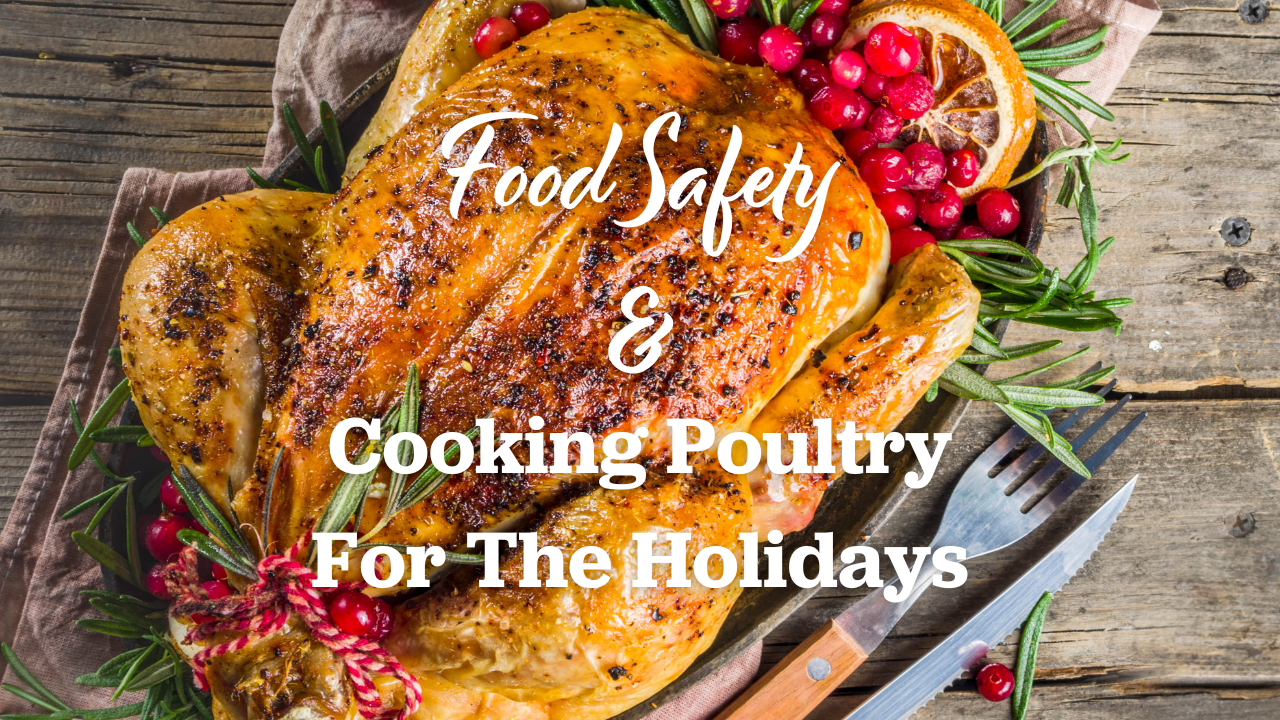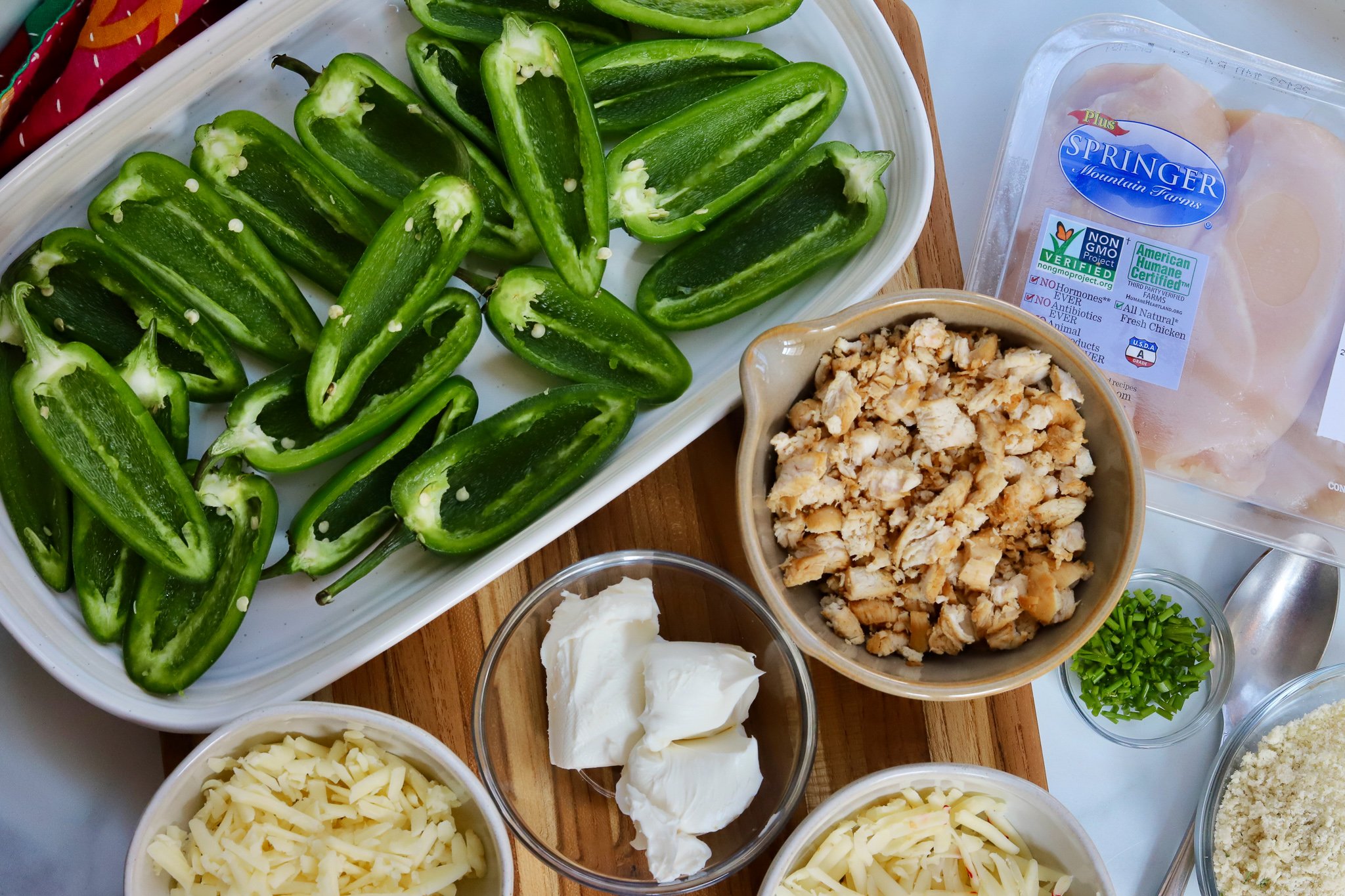We are thankful for may things, but especially thankful to the US Department of Agriculture's Food Safety & Inspection Service for providing a plethora of helpful information on properly storing, preparing and cooking poultry for the holidays. Filling happy bellies and gift giving should be the highlight of your family gatherings over the next few months and not a food borne illness because the food wasn't handled safely. Following these simple steps at home will help reduce the risk of food borne illnesses and allow you to be thankful for the extra care you took in preparing a delicious and safe meal for your family and friends.
Safe Food Handling for the Holidays

The Basics
You can't see, smell, or taste harmful bacteria that may cause illness, so it's important to follow a few key steps in food handling, cooking, and storage to prevent foodborne illness. Here are the four to keep top of mind:
Clean - Start with clean hands, utensils, and surfaces. Cleaning is not just important at the start of food preparation. Be sure you also wash them throughout and after food preparation to ensure bacteria do not spread.
Separate - Keep raw meat and poultry separate from cooked foods or other foods that will not be cooked later in the process.
Cook - Always cook your food to a safe minimum internal temperature, which you should measure with a food thermometer. The proper internal temperature for all poultry is 165°F. This will ensure any harmful bacteria in your food has been killed before you eat it.
Chill - Keep perishable foods at a safe temperature: below 40°F. Follow the two-hour rule and do not leave perishable foods at room temperature for more than two hours (or one hour if the food is sitting in temperatures above 90°F). Plan to use or freeze leftovers within four days of when you first cooked them. Before you eat leftovers, reheat them to 165°F.
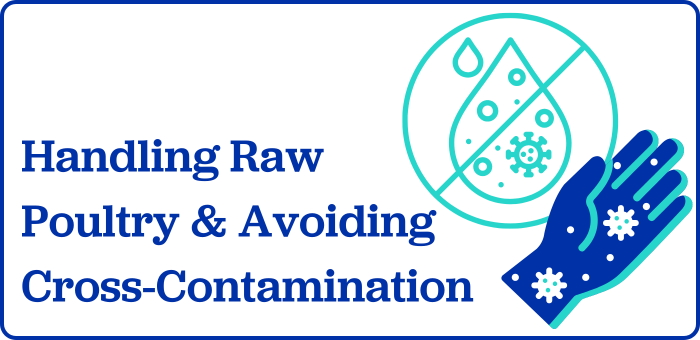
Avoiding Cross Contamination When Handling Raw Poultry
We often get asked about washing or rinsing raw chicken (or any poultry) prior to cooking. It sounds like it would make the food safer if it was washed or rinsed, but it really isn't and creates more opportunities for cross contamination in your kitchen!
Before and after handling any raw meat or poultry, always wash hands with soap and water for 20 seconds.
Keep raw meat and poultry separate from any ready-to-eat foods or foods that won't be cooked later (e.g., vegetables, fruits, side dishes). This helps prevent the spread of germs to these foods, which could get you sick if consumed. After cutting or preparing raw poultry, wash cutting boards, utensils, and counter tops with soap and hot water. After washing, sanitize cutting boards and surfaces by using a solution of 1 tablespoon of unscented, liquid chlorine bleach per 1 gallon of water.
Washing or rinsing raw poultry before you cook your Thanksgiving meal is risky because bacteria can spread around your kitchen and to other foods you may be preparing. To avoid this risk, it is safest to not wash raw poultry. However, if you do choose to wash or rinse your raw turkey, make sure to thoroughly clean and sanitize the sink and surrounding areas before continuing to prep.
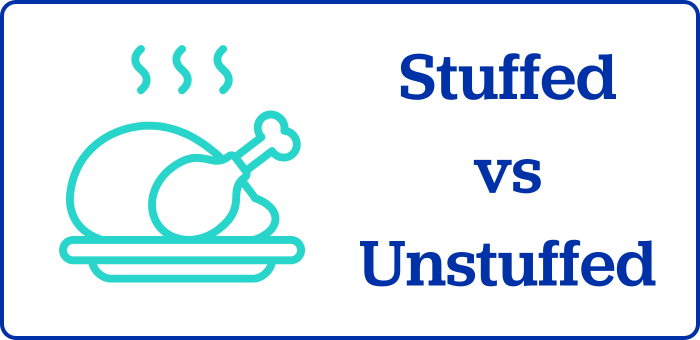
Stuffed Vs. Unstuffed
Remember too that if you are stuffing your poultry that the temperature of the stuffing must also reach at least 165°F. For optimum safety, the USDA actually recommends that poultry NOT be stuffed, but instead baked in a separate dish. If you do choose to do it, we want to make sure you are equipped with the knowledge of how to safely cook and serve a stuffed chicken (or other stuffed whole poultry) to eliminate the possibility of potential health risks to your family & guests.
For more on safely stuffing your poultry this holiday season, check out our feature on Stuffed Vs. Unstuffed.
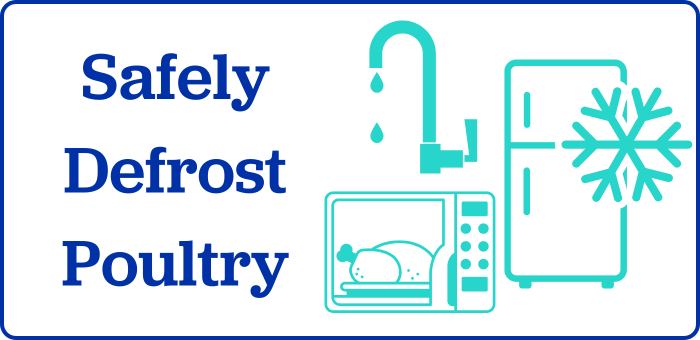
Safely Defrosting Frozen Poultry
We have a great guide for safely Freezing & Defrosting Poultry.
The safest way to defrost chicken is to place in the fridge for 1-2 days prior to date needed. Larger cuts and whole chickens can take up to 2 days to thaw in the refrigerator. Never leave chicken out to thaw at room temperature. Once thawed, the chicken can be kept in the refrigerator for another day or two before cooking. Any chicken thawed in the refrigerator that is not used, can safely be refrozen without cooking.
If crunched for time, use the cold water method following USDA guidelines:
- Place chicken in a frozen leak proof plastic bag, and submerge in a large bowl filled with cold tap water, making sure the bag is sealed before placing in water.
- Change out the water every 30 minutes until chicken is completely thawed.
- Whole chickens (3-4 lbs) or a tray pack of parts will most likely take 2-3 hours to thaw with this method. A 1 lb package of boneless skinless chicken should thaw within an hour.
- Cook immediately after thawing with this method.
- Microwaving to defrost is another recommended method. Follow the recommended procedure from your microwave manufacturer. Any chicken defrosted using the microwave method should be cooked immediately, because parts of the chicken may have become warm and started to cook.
- Chicken defrosted using the water or microwave method should be cooked before refreezing.
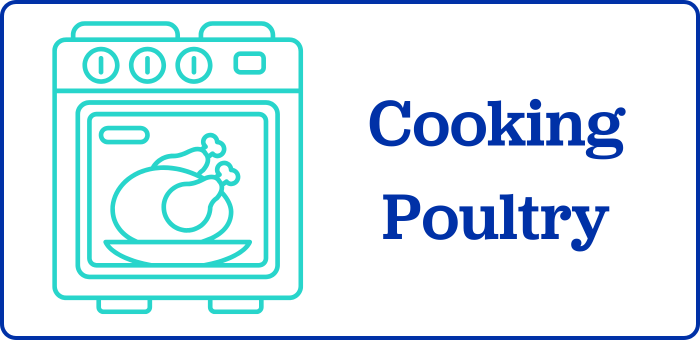
Cooking Poultry
There are many different ways to cook whole poultry, including roasting, deep fat frying, smoking, and more. Regardless of how it is cooked, the internal temperature of cooked poultry must be a minimum of 165°F.
Use a food thermometer to measure the internal temperature of poultry and cut portions of poultry. For a whole bird, measure in three areas:
- Thickest part of the breast
- Innermost part of the wing
- Innermost part of the thigh
Note: Take care to ensure the thermometer does not touch any bones while measuring the temperature, as this will give an inaccurate reading.

Need More Help?
USDA's Meat and Poultry Hotline is staffed with food safety specialists who are equipped to answer questions about safe food handling, primarily for meat, poultry, and egg products. The Hotline is open Monday through Friday from 10 am-6 pm ET (except Federal Holidays). The Hotline is open on Thanksgiving Day from 8 am-2 pm to help with any Turkey day questions!
Phone: 1-888-MPHotline (1-888-674-6854)
Email: [email protected]
Live Chat: www.ask.usda.gov
USDA FSIS Publications & Resources
Poultry: Basting, Brining, and Marinating (English and Spanish)
